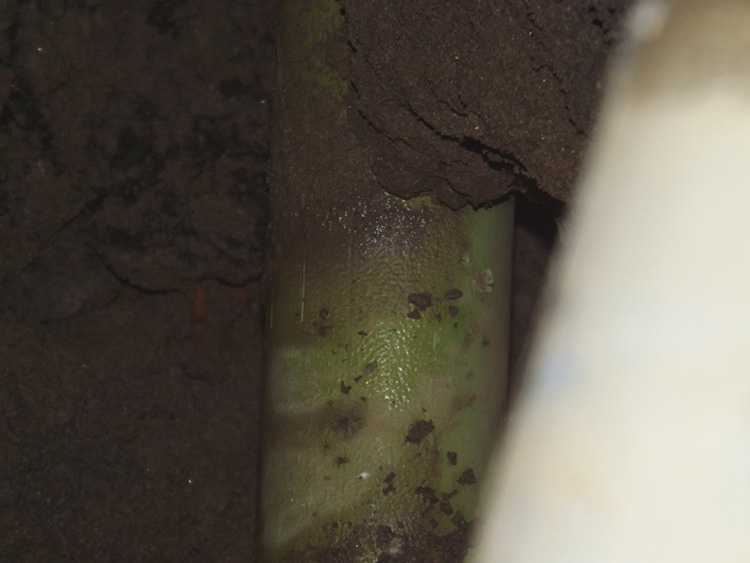Top Image: Cast Iron from the 19th century is going to have Bell & Spigot joints. The color is usually a grayish-black. The Bell portion of the pipe will be a separate slide-on item which is rather noticeable.
Second Image: Cast Iron pipes altered sometime around 1900. Flange joints became available, but Bell & Spigot joints were still used. The color is usually still a grayish-black, but the Bell portion of the pipe is a part of the pipe cast so it will be all one piece.
Third Image: Ductile Iron is sometimes darker in color than Cast Iron often being more black in color than grayish-black. Like Cast Iron, Ductile Iron can have either flange joints or Bell & Spigot.
This makes identifying Ductile Iron from Cast Iron very difficult, except for one item. From the very beginning of the use of Ductile Iron in the 1950’s, it has been a standard practice to wrap the pipe in a loose plastic material, often called a “baggy”. Ductile Iron is the only pipe material that uses these loose plastic wraps.
Fourth Image: Steel pipe is usually welded, though there can be additional joint support such as a mechanical joint.
Usually when we see photos of steel pipe it is either covered in a black residue that resembles flat black paint, but that is a natural result of the manufacturing process. The other common image is the “shiny steel” image after the residue is taken off. But steel is never placed in the ground this way. Steel is always coated in one way or another.
The left image here shows steel with the thick black bituminous fiber (often called coal-tar) which has a rough surface.
The central image shows a thick bonded polymer coating often in a washed-out aqua color, as shown.
The image on the right is wrapped steel. This is a bonded three-layer asbestos tape spiral wound on the pipe. This can be black tape, or white tape as shown here.
Steel pipe can have a fourth option, any one of the concrete types of pipe. This may be a thin concrete coating or a very thick concrete layer on the outside. This is usually one of the steel cylinder-concrete pipes which are commonly used for water transmission pipes and petroleum pipelines.





